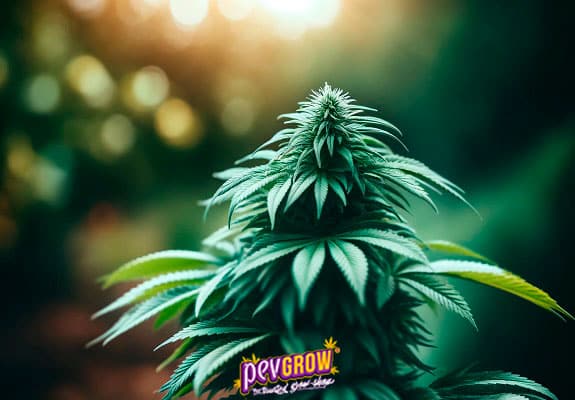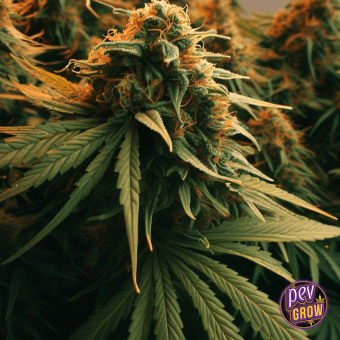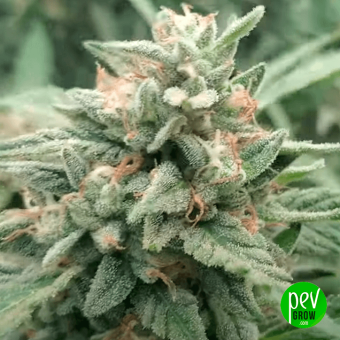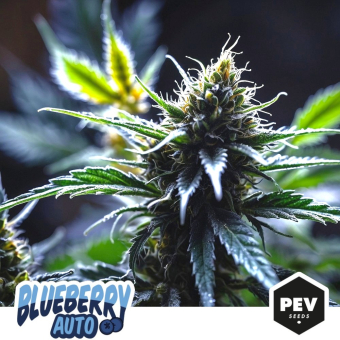- Explore the peculiarities of Cannabis Ruderalis, from its autoflowering and resilience to its medicinal benefits and the most outstanding strains.
- The fastest autoflowering strains
- The most productive autoflowering strains


In constant struggle for the regulation of cannabis, mainly in the medicinal field.
23-05-2024 07:35:15 - Updated: 23 May, 2024
In the vast world of cannabis, the subspecies Cannabis ruderalis is often the least known among the three main cannabis subspecies. Originating from regions in Asia, Eastern Europe, and Russia, this plant has developed unique characteristics adapted to the short and rigorous summers of these areas. Throughout this article, we will explore what cannabis ruderalis is, its specific effects, the morphology of its leaves, and how it differs from its more popular relatives, Cannabis indica and Cannabis sativa. We will also highlight some of the best ruderalis descendant strains, providing an essential guide for growers and consumers.
⛳ What is Cannabis Ruderalis?
Cannabis ruderalis is a cannabis subspecies characterized by its ability to flower automatically, regardless of the light cycle. This feature, known as autoflowering, is a distinctive trait that sets it apart from Cannabis sativa and indica, which depend on light changes to begin their flowering. Its stature is generally lower, rarely exceeding 60 cm, making it ideal for discreet cultivation or limited space.
From pure ruderalis varieties emerged all the autoflowering seeds of today, starting with Ruderalis Indica and Ruderalis Skunk by Sensi Seeds, followed by Lowryder#1 and #2 by Dr. Joint, and continuing with the autos from the banks Grass-O-Matic and Buddha Seeds. From there, the autoflowering revolution began and continues to this day, as these plants are very interesting for several reasons.
✨ Effects of Cannabis Ruderalis
The effects of cannabis ruderalis are generally milder compared to the other subspecies due to its lower THC content. However, it is appreciated for its higher CBD content, making it attractive for medicinal users looking to alleviate symptoms without the intense psychoactive effects associated with THC. Ruderalis is ideal for those seeking relaxation, pain relief, and help against anxiety without compromising mental clarity. There are also CBD-rich autoflowering seeds that descend from ruderalis but have been crossed with plants containing very high levels of cannabidiol and barely contain THC, thus their psychoactive effect is almost nil, but they have greater therapeutic power.
👌 Leaf Morphology of Cannabis Ruderalis
The leaf of cannabis ruderalis is distinguished by its robust and compact structure. Its leaves are generally thicker and less serrated than those of sativa and indica. Additionally, the number of leaflets per leaf is usually fewer, with five to thirteen leaflets that are shorter and wider. The central leaflet is usually longer than in other subspecies as well. This morphology is an adaptation to its natural environment, less conducive to lush growth due to more severe weather conditions.
☕ Differences between Ruderalis and the other Cannabis Subspecies
Cannabis, with its various subspecies, presents unique characteristics that satisfy different needs and preferences of consumers and growers. Cannabis ruderalis is mainly distinguished by its autoflowering capability, but there are other significant differences with respect to Cannabis sativa and Cannabis indica:
- Life Cycle: While sativa and indica require specific changes in the light cycle to flower, ruderalis flowers automatically after a few weeks of growth, regardless of light. This is especially advantageous in regions with short summers.
- Size and Structure: Ruderalis is generally smaller and more robust. Its low stature and compact structure make it ideal for discreet cultivation or in reduced spaces.
- Cannabinoid Composition: Unlike its counterparts, which may have high levels of THC, ruderalis typically has low THC and high CBD, making it preferred for medical treatments without intense psychoactive effects.
- Resistance and Adaptability: Originating from colder and more hostile climates, ruderalis is notably resistant to adverse weather conditions and diseases, making it an ideal candidate for hybridization in search of robustness in new strains.
📖 Advantages and Disadvantages of Cannabis Ruderalis
Cannabis ruderalis possesses unique characteristics that offer both advantages and disadvantages for growers and consumers. Below, we explore these aspects to better understand how this subspecies fits various needs and preferences.
Advantages of Cannabis Ruderalis
- Autoflowering: The most notable feature of ruderalis is its ability to flower automatically, regardless of the hours of light. This greatly facilitates its cultivation, especially in areas where light conditions are less controllable.
- Short Cultivation Cycle: Ruderalis generally completes its life cycle in about 10 weeks from planting to harvest. This speed allows multiple cultivation cycles in the same space and time that other subspecies would take to complete just one.
- Compact Size: Its low stature is ideal for discreet cultivation or for those with limited space, such as balconies or small indoor gardens.
- Cold Resistance: Originating from cold climates, ruderalis is robust and resistant to adverse weather conditions, making it less susceptible to common diseases that affect other varieties in similar climates.
- Medical Potential: With higher CBD content and lower THC, it is ideal for users seeking therapeutic benefits without too intense psychoactive effects.
Disadvantages of Cannabis Ruderalis
- Less THC: For recreational consumers seeking a high psychoactive effect, ruderalis may be disappointing due to its low THC content.
- Lower Bud Production: Although cultivation techniques and genetics are improving, ruderalis plants tend to produce fewer buds than indica or sativa, which can be a limiting factor for commercial use.
- Limited Variety of Effects: Due to its genetic profile, the options for effects are more limited compared to the other subspecies that offer a wider range of sensory and psychoactive experiences.
- Fewer Pure Varieties Available: Although there are many hybrid strains that use ruderalis genetics, pure varieties are rare and may offer less diversity in terms of flavor and potency.
📲 Best Ruderalis Strains
In the cannabis market, ruderalis strains have gained popularity, especially for their autoflowering characteristic that facilitates their cultivation. Here we highlight some of the best autoflowering strains incorporating ruderalis genetics:
- Amnesia Auto: An autoflowering version of the classic Amnesia. Known for its potent cerebral effect and quick cultivation cycle.
- Gorilla Auto: Derived from the potent Gorilla Glue, this strain offers impressive resin production and a relaxing effect.
- Black Mamba Auto: With beautiful foliage and compact flowers, it is ideal for those seeking potent effects and an attractive aesthetic.
- OG Kush Auto: This automatic version of OG Kush maintains the characteristic flavor and potency of its predecessor, with the advantage of a shorter life cycle.
- Blueberry Auto: Combines the delicious aroma and flavor of Blueberry with the ease of cultivation of automatics, ideal for novices.
- Northern Lights Auto: One of the most famous strains for its ease of cultivation and potency, ideal for both beginner and experienced growers.
- Runtz Auto: This variety offers a balance between sweet and fruity flavors with good resin production.
- Haze XXL Auto: For Haze lovers, this automatic version provides a fast cycle with the classic uplifting effect and complex flavors.
➕ Conclusions
Cannabis ruderalis, with its unique autoflowering capability and adaptability to harsh climates, offers unique characteristics that complement the diversity of cannabis. Its cannabinoid profile, which favors CBD, makes it a valuable option for medicinal consumers. Additionally, its genetic influence has been key in the development of autoflowering strains that allow growers to harvest more than once per season. Undoubtedly, Cannabis ruderalis is a genetic treasure that continues to contribute to the cannabis world in many valuable ways. Well, now that you have a clear understanding of what cannabis ruderalis is, I’m sure you’re eager to grow this type of automatically flowering plants, and to facilitate your task, I thought it might be a good idea to leave you with this other article that provides 10 tips for growing autoflowering plants.
🚀 FAQs about Cannabis Ruderalis
- Is cannabis ruderalis legal? The legal status of cannabis ruderalis depends on the cannabis laws of each country or region, as it is not legally differentiated from other forms of cannabis.
- Can I grow cannabis ruderalis at home? Yes, thanks to its compact size and automatic flowering cycle, ruderalis is an excellent option for growers with limited space or who prefer a less demanding plant in terms of lighting control.
- How does ruderalis genetics influence other strains? Ruderalis genetics is primarily used to introduce the autoflowering trait into new hybrids. This allows growers to not rely so much on light cycles to induce flowering, which is especially useful in climates where natural light is unpredictable or in indoor grows where efficiency is sought to be maximized.
- What are the medicinal benefits of cannabis ruderalis? Due to its high CBD and low THC content, cannabis ruderalis is ideal for users seeking therapeutic effects without an intense psychoactive experience. It is useful for treating conditions such as anxiety, chronic pain, and inflammation without the side effects of THC.
















After reading the article, I finally understand that cannabis ruderalis is a lesser-known variety but with unique characteristics, especially its ability to flower automatically, which seems very promising for cultivation in colder climates.